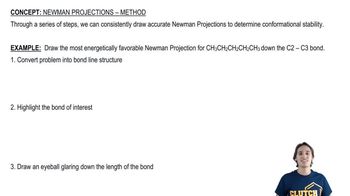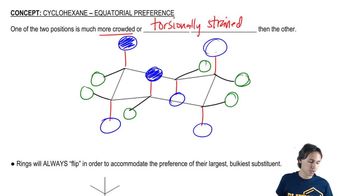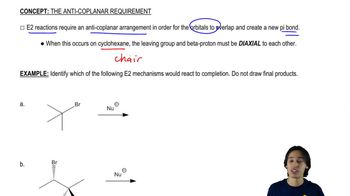Use a Newman projection about the indicated bond to draw the most stable conformer for each compound.
a. 3-methylpentane about the C2―C3 bond
 Verified step by step guidance
Verified step by step guidance Verified video answer for a similar problem:
Verified video answer for a similar problem:



 0:34m
0:34mMaster Introduction to Drawing Newman Projections with a bite sized video explanation from Johnny
Start learning